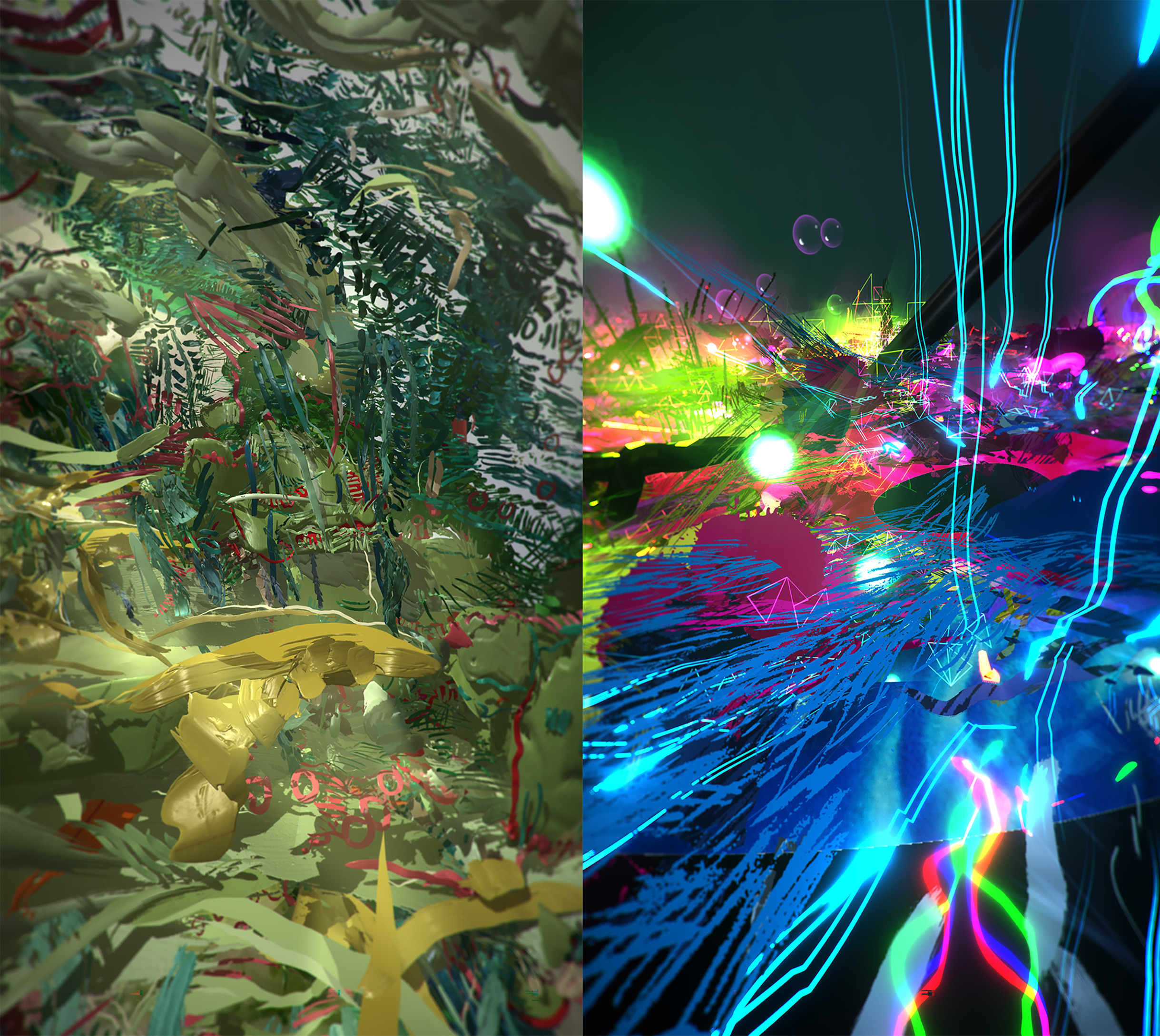Virtual reality helps shape and respond to artistic impulses

In February 2020, weeks before the pandemic made such a thing nearly impossible, the MK Gallery in Milton Keynes, UK, hosted an exhibit called Paint Park that featured works by Alison Goodyear. A visual artist from nearby Bedfordshire, Goodyear works in what she calls “the expanded field of painting.” That means she examines the conventional tools of abstract painting, such as an artist’s palette, using technological ones. And she uses one medium in particular: virtual reality (VR).
To experience the exhibit’s centerpiece, called Topsy Turvy, visitors had to sit in a swivel chair and don a VR headset. They navigated through abstract paintings created by Goodyear. Even though the experience was virtual, it afforded the illusion of being a physical exploration—instead of looking at a two-dimensional surfaces, viewers encountered digital paint. In one half of the work (Topsy) viewers were plunged into the messy swishes and swirls that oil paint takes on in the physical world. Swaths of paint became swooping, overlapping pathways. The other half (Turvy) plunged viewers into a painting based on digital tools that looked unlike paint, including pulsing neon lights and oscillating graphics.“When you access these VR paintings, you’re fully immersed, like in a landscape,” says Goodyear. “It’s very otherworldly, and these paintings are like a form of world-making.” By turning an abstract painting into a virtual three-dimensional space, Goodyear says, she began to rethink her ideas of how abstract painting fits into the world. “I started to theorize that painting was a place.”